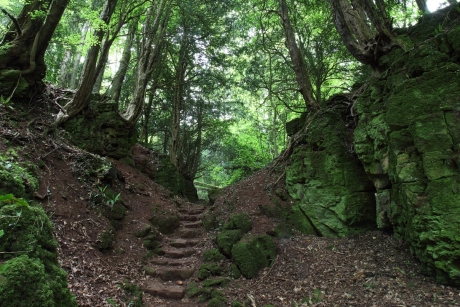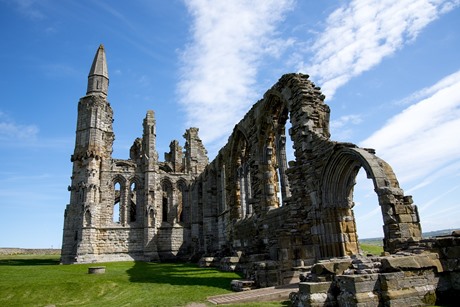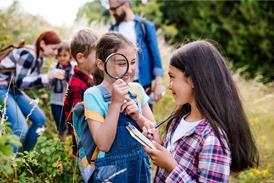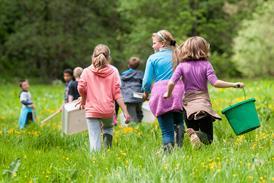 M.jpg)
With World Book Day edging closer, we suggest some school trip ideas to get pupils enthusiastic about reading and writing.
Teaching students about the world of literature is extremely important. With technology on the rise, it’s crucial that pupils are still exposed to the stories and worlds created by writers, to give them inspiration and ideas. We look at some attractions across the UK which could be the ideal place to take your class on a themed trip this year.
1. The Harry Potter novels, written by J.K Rowling are one of the most iconic and famous book series ever written and at the Warner Bros. Studio Tour London pupils can not only learn about the films but the books behind them too. During a school visit you can enter the Forbidden Forest’, hop on board the Hogwarts Express, and look around the Great Hall. A variety of workshops are available at the studios for schools, which cover a multitude of subjects from Art & Design to Film & Media, to English.
2. The World of Beatrix Potter in Bowness-on-Windermere, in Cumbria is another option for schools. The themed museum lets you walk through the stories of Beatrix Potter, discovering the much loved characters of Peter Rabbit, Jemima Puddle-duck and Mrs Tiggy-Winkle. School rates are available and private function rooms can be hired out for special events. Plus, this year will see the return of the Where is Peter Rabbit? show.
3. A visit to the Roald Dahl Museum and Story Centre in Buckinghamshire provides a wonderful idea for those who have read many of the beloved children’s books by author Roald Dahl. School groups can enjoy three hands-on galleries as well as a programme of activities and storytelling sessions. Workshops available for Primary students include Exploring Editing, Crafting Characters and Unlocking Ideas, all of which tie in with Literacy.

Pictured: Puzzlewood.
4. Puzzlewood in Gloucestershire is said to be where J.R.R. Tolkien got his inspiration for Middle Earth for his book series The Lord of the Rings, and it’s no surprise. The forest is filled with twisting trees, crafted bridge walks and carved benches. The trail is a child’s dream, with magic and enchantment hidden around every corner, as well as those looking for a tranquil stroll. The wood also stages Shakespearean shows such as Romeo & Juliet and Macbeth on various dates throughout the year.
5. The V&A Museum in London has recently opened a new exhibition looking at Winnie-the-Pooh, and offers education to coincide with it. Due to run until 8th April, the new exhibition is reported as the UK’s largest ever exhibition on Winnie-the-Pooh, A.A. Milne and E.H. Shepard. To mark World Book Day, schools and teachers can visit the V&A, dressed as their favourite character from Winnie-the-Pooh for storytelling sessions and a special School's Exhibition Day. This will take place on 1st March.
6. A visit to the Bronte Parsonage Museum in Haworth, Yorkshire, can cater for Key Stage 1 and 2 visits with a variety of workshops to tie in with both the History and Literacy curriculum, as well as Drama. During a visit, pupils can enjoy a variety of themed walks, as well as hands-on activities. The museum looks at the Bronte family and contains a collection of works from the Bronte sisters and artefacts.
7. Llandudno is home to the origins of the stories of Alice in Wonderland by author Lewis Carroll as well as providing a scenic location for your class with lots to offer, from sandy beaches to art sculptures, to the longest pier in Wales. Although it is not certain, Alice Liddell of whom the character ‘Alice’ is based used to stay in Llandudno and often had adventures around the town which prompted the tales that can be read about in Carroll’s novel. It is also believed to have inspired Carroll’s second Alice novel, Alice through the Looking Glass.
8. The Shakespeare’s England region covers South Warwickshire including Stratford-upon-Avon, Warwick, Kenilworth, Royal Leamington Spa and the surrounding towns and villages. Stratford-upon-Avon is well known for being the birthplace of William Shakespeare and classes visiting can go to Shakespeare's Birthplace, Shakespeare's New Place and can take various themed tours.

Pictured: Whitby Abbey.
9. The moody ruins of Whitby Abbey have drawn many to the location as a site of settlement, religious devotion and literary inspiration. Bram Stoke’s Dracula used Whitby Abbey as inspiration for setting, and students too can explore the abbey and gather their own interpretations and story ideas.
10. The Sherlock Holmes Museum in London can accommodate for up to 45 students and is full of interesting information and artefacts from the stories and films. You can also arrange special Sherlock Holmes walking tours around London which take in the various locations mentioned in the stories (both books and films).
Have you read our latest author interview? If not, click here to find out why author and illustrator Lydia Monks thinks school travel is so important.
Lead image: The World of Beatrix Potter (Photo credit: Steve Barber)









